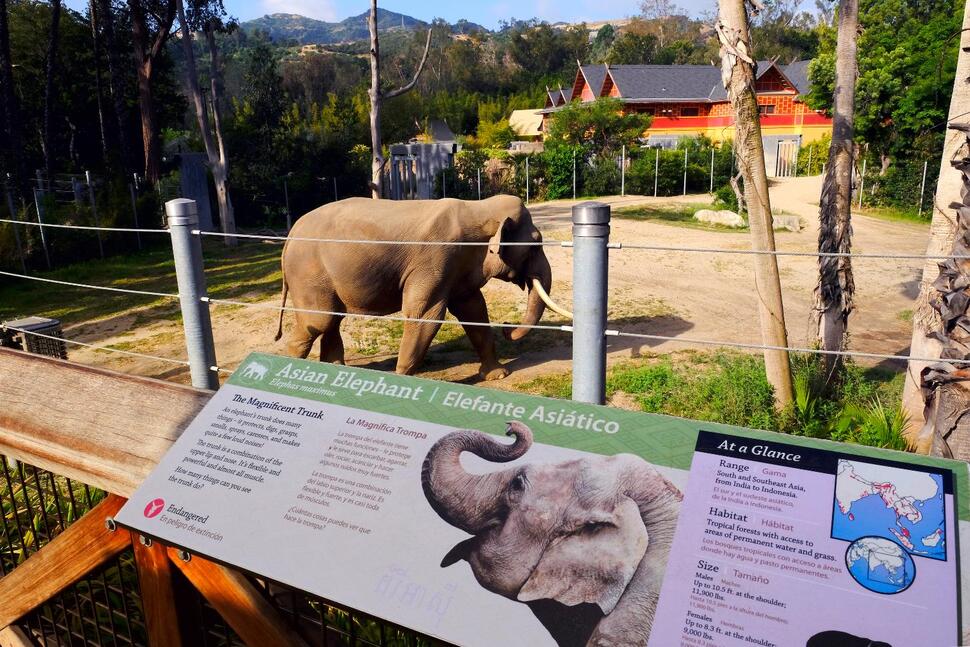From Los Angeles to Tulsa: The Controversial Journey of Billy and Tina
Pelagic ProblemsWhy the LA Zoo’s Elephant Relocation Sparked Outrage
In spring 2025, the Los Angeles Zoo quietly shipped out Billy and Tina, its last remaining Asian elephants, to the Tulsa Zoo in Oklahoma. The move, done largely under the radar, shocked animal welfare groups, sparked legal challenges, and reignited a long-simmering debate about whether elephants belong in zoos at all.
The zoo’s reasoning? Tulsa Zoo, with its newly upgraded 17-acre Elephant Preserve, would offer “better social and physical enrichment.” But to many observers and experts, the transfer wasn’t just about logistics but a symbolic and ethical crossroads for the treatment of captive wildlife in the U.S.
Who Are Billy and Tina?
-
Billy: A 40-year-old male elephant who had lived at the L.A. Zoo since 1989. Captured as a calf in Malaysia, he became a familiar face and, controversially, a symbol of captivity-related stress due to years of solitary confinement.
-
Tina: At 59, one of the oldest elephants in North America. She was rescued from circus life and brought to L.A. in 2010 with another elephant, Jewel (now deceased). Tina required geriatric care and was considered highly bonded with Billy.

[An image of a grey, wrinkly, male elephant named Billy. Billy has two tusks that are filed flat on each side of his trunk. Billy is in a metal enclosure at the Los Angeles zoo.]
Why the Move Is So Controversial
1. Lack of Transparency
The zoo announced the transfer only after it had already happened. Even city officials and advocacy groups were caught off guard. A pending lawsuit trying to halt the transfer was effectively nullified because the elephants were already gone.
“They didn’t just ignore public input, they erased it.”
— Legal advocates from the Elephant Guardians of L.A.
2. Zoo vs. Sanctuary Debate
Animal advocates, including celebrities like Cher, Priscilla Presley, and Justin Theroux, had called for Billy and Tina to be retired to a true sanctuary, like the PAWS sanctuary in Northern California or the Tennessee Elephant Sanctuary, both of which offered to take the elephants at no cost to the city.
Why it matters: Sanctuaries offer hundreds of acres, no forced public display, and minimal human intrusion, key for aging or emotionally distressed elephants. In contrast, Tulsa is still a zoo with daily visitors and limited roaming space, despite its recent expansion.
3. Legal and Ethical Questions
A lawsuit filed in L.A. Superior Court sought an emergency injunction, arguing the zoo violated public trust and ethical standards. Though the court didn’t stop the transfer, legal proceedings are expected to continue in both California and Oklahoma.
“This wasn’t about safety, it was about optics and control,” said one plaintiff attorney.
4. A Pattern of Elephants Dying in Captivity
Before Billy and Tina's departure, the L.A. Zoo lost two elephants in under two years. This prompted the Association of Zoos and Aquariums (AZA) to revoke the zoo’s elephant certification, as accredited facilities must house at least three elephants.
Instead of reassessing the entire program or allowing public oversight, the zoo chose to end its elephant exhibit without ever exploring sanctuary alternatives in good faith, critics say.
5. Welfare Concerns at the Receiving Zoo
Advocates claim Tulsa Zoo has a track record of housing elephants in small herds and indoors for extended periods during harsh winters. For Billy, who had long suffered signs of psychological distress such as repetitive swaying, this raised serious red flags.
💔 A Symbol of a Larger Struggle
This isn't just about two elephants. Billy and Tina’s quiet exit reflects deeper tensions in zoo culture:
-
Should elephants be kept in captivity at all?
-
When is a zoo transfer just a nicer cage?
-
What role should public opinion play in animal management?
To many, the L.A. Zoo missed a rare opportunity: to retire two elephants with dignity and transparency, and to set a new precedent for urban zoos that no longer have the space, climate, or ethical standing to house such intelligent, emotional animals.
What Happens Now?
Billy and Tina are reportedly adjusting to life in Tulsa’s herd. But back in Los Angeles, the public conversation isn’t over. Lawsuits, city council investigations, and protest campaigns are ongoing. And around the country, the debate over the ethics of elephant captivity is growing louder.
One thing is clear: what happened in Los Angeles was more than a relocation, but a line in the sand.
Want to support sanctuary efforts?
-
Learn about PAWS Sanctuary
-
Or follow grassroots activism like Leap for Lucy

